VOLUME 3 / ARTICLE 01 ︎
SCRAMBLED & ASSEMBLED
By Boris Yu
October 30th 2023
SCRAMBLED & ASSEMBLED
A designer explores how waste materials can be repurposed to create organic, composite, and future-forward furniture.
By Boris Yu
October 30th 2023

Craft as a practice is a marker in human history, highlighting our ingenuity in light of calmness and turbulence. As resources and available land dwindle with capitalism's exponential consumption rate, there has never been a more crucial time to explore alternate methods of production and relationship with the objects we own.
Scrambled & Assembled reorients the human experience through craft, technology, and nature to rekindle the connection we have lost within this emotionally detached environment. By examining our everyday interactions and introducing novel use cases for the digital tools we own, this research proposes an at-home fabrication method inspired by natural environments and technology.
Made from 25 lbs of oyster shells (that’s 300+ oysters shells redirected from landfill), the coffee table created is an artefact encapsulating the fleeting changes brought about when the world paused in 2020. With a leap of faith, Boris bridges his childhood and the present through craft as he navigates the abundance of nature mediated through his smartphone.
Scrambled & Assembled reorients the human experience through craft, technology, and nature to rekindle the connection we have lost within this emotionally detached environment. By examining our everyday interactions and introducing novel use cases for the digital tools we own, this research proposes an at-home fabrication method inspired by natural environments and technology.
Made from 25 lbs of oyster shells (that’s 300+ oysters shells redirected from landfill), the coffee table created is an artefact encapsulating the fleeting changes brought about when the world paused in 2020. With a leap of faith, Boris bridges his childhood and the present through craft as he navigates the abundance of nature mediated through his smartphone.
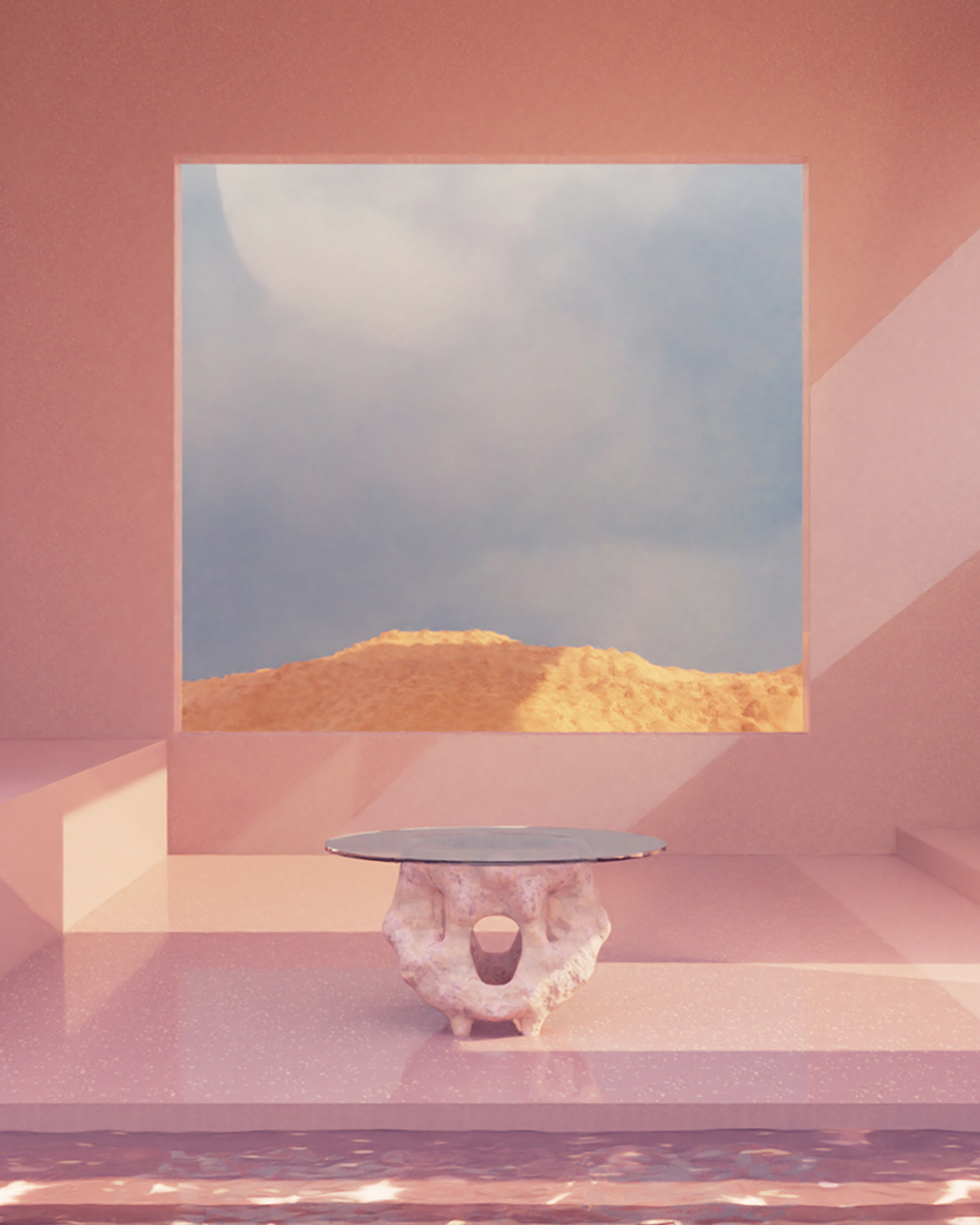
Early renderings of Scrambled & Assembled
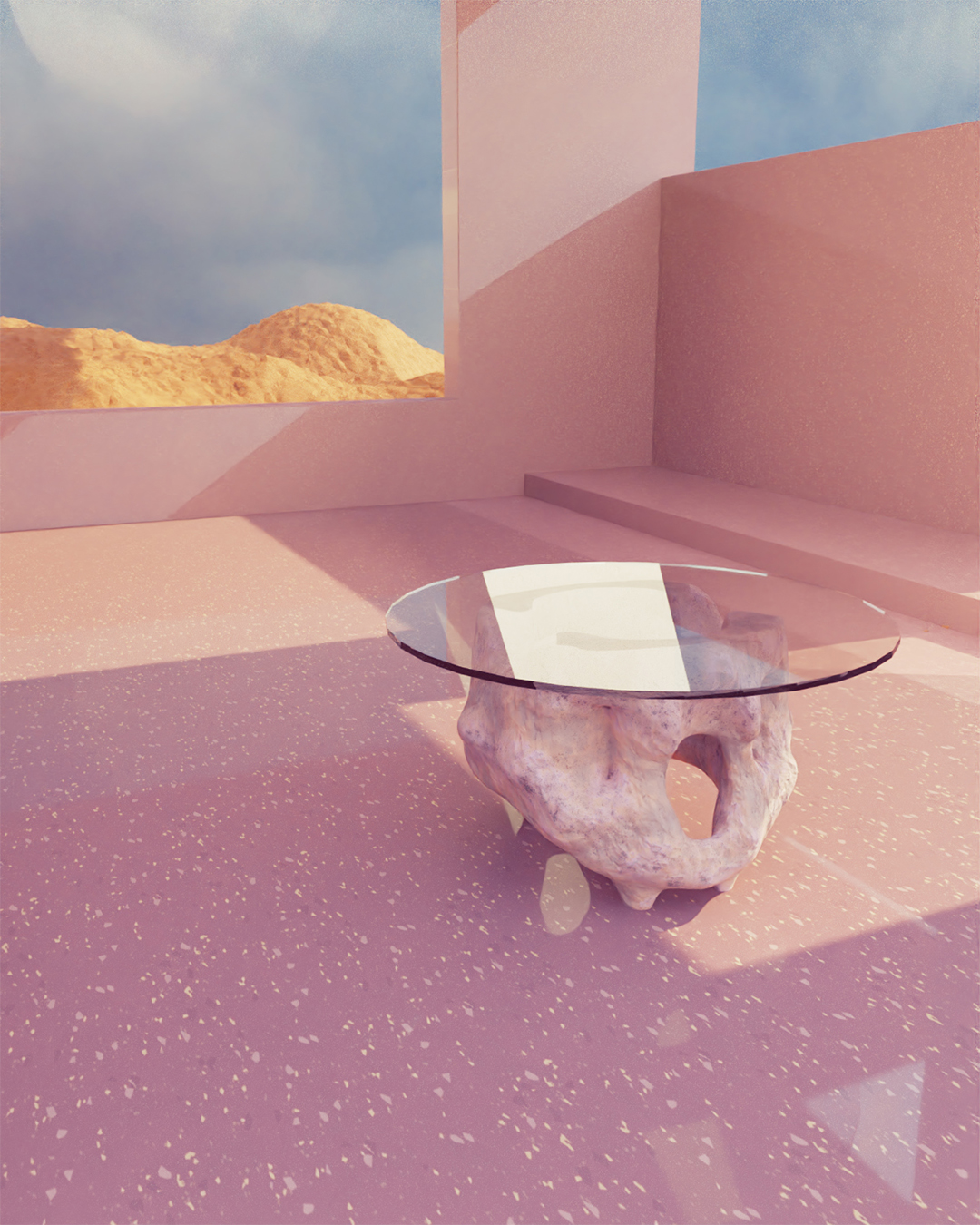
Early renderings of Scrambled & Assembled
The ground beneath cracked in harmony as my boots made contact with the scattered leaves and branches across the forest floor. It's as if time stood still in this forest while the surrounding residential area sprouted condos and swarmed with vehicles. Yet looking around, felled trees littered the forest floor with very little saplings in sight. Some might say the municipality was doing their job—but to whose benefit?
The trickling of the stream I was once fearful of seemed much smaller than I remembered. With a deep inhale, I leaped over what once blocked the child version of me from the other side of the forest. Ripples formed from the mud falling from my boots but disappeared as quickly as they were created. In a blink of an eye, all traces of this disturbance were consumed by the current of the stream. It was worth the small adventure though. Time after time, the remnants of a decaying tree trunk brought me back to the forest whenever I visited home in Toronto. As if it was the only marker of time amongst the towering trees, this brownish-orange statue carried on its bark the life that once existed and has since dissipated over the past two decades.
“When we work with nature, we become more aware of the beauty that exists around us—both the living and decaying.”
“Scrambled & Assembled” began as unplanned walks turned into a ritualistic practice of slowly observing a forest by my parent’s home. Over the course of half a year, I realised nature within a suburban context carries a different set of meaning and methods of care. Lawns are maintained to trim away growth at periodic intervals with the intention of upkeeping the visual aesthetics of clean, healthy households. Suburban forests, while maintained less, take a human-first approach to ensure the public can safely access these open spaces. Both cases treat the cycle of nature as an inconvenience and something that must be stunted and preserved.
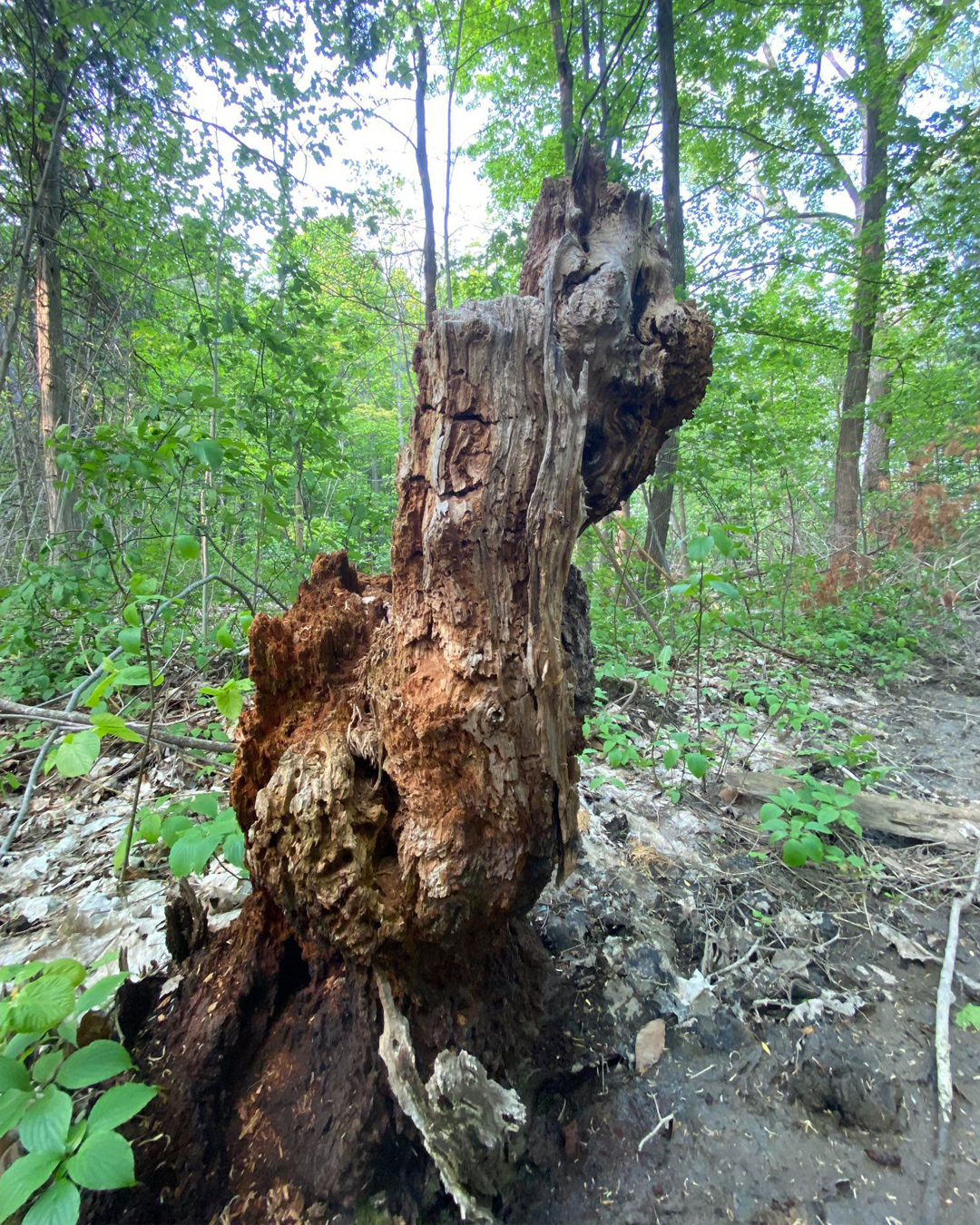
Decaying tree trunk in the woods

Decaying tree trunk in the woods
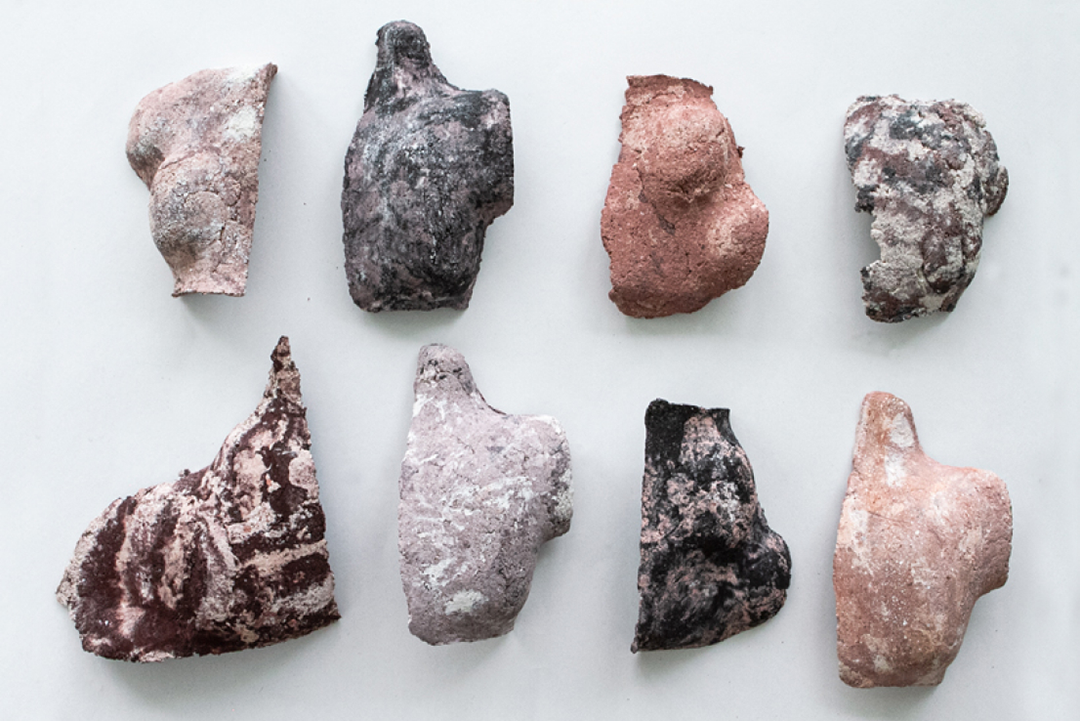

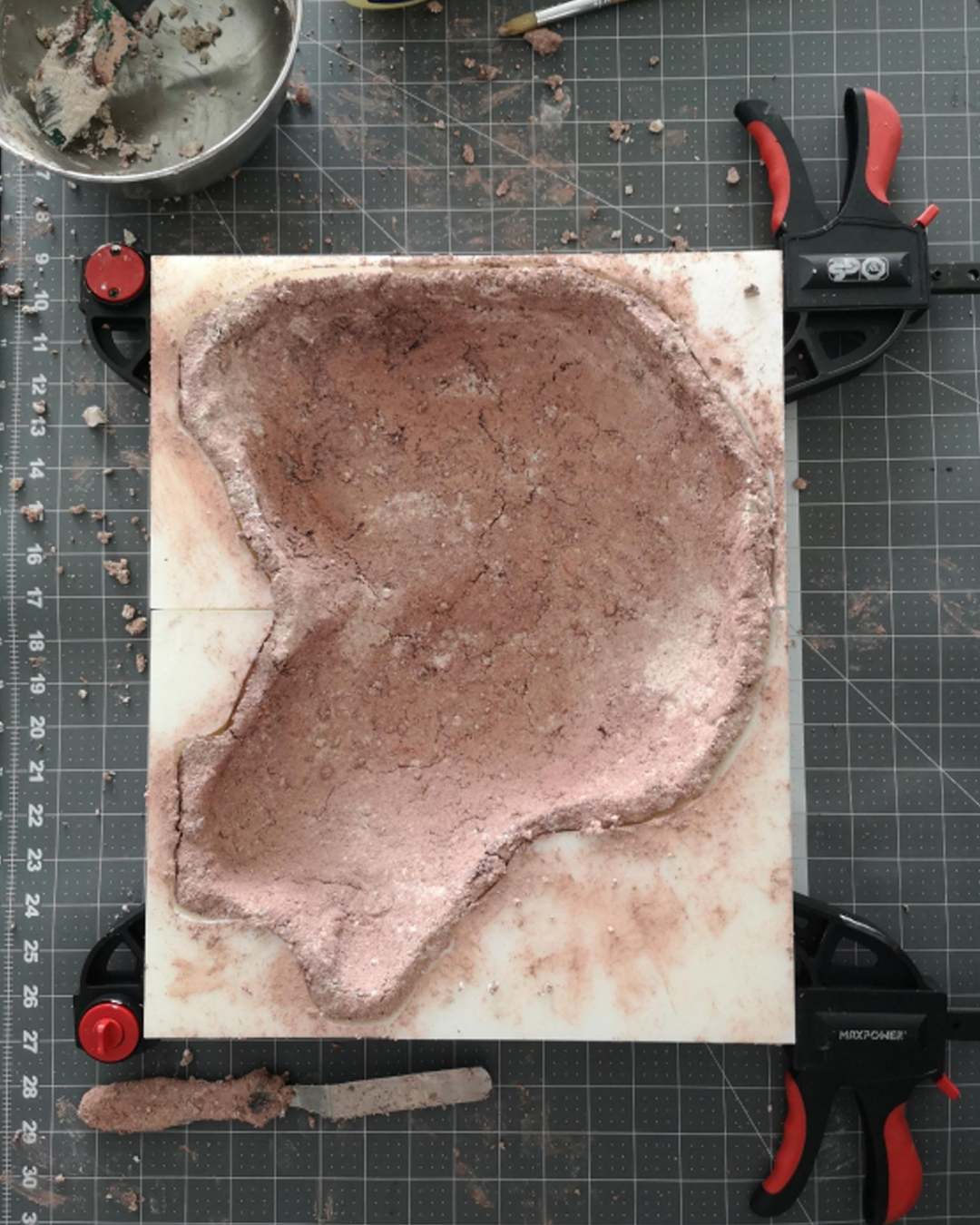

Early biomaterial explorations
In the months during 2020 when the whole world came to a stop, these daily walks became an opportunity to witness my neighbourhood spring with life. The streets were silent but the birds filled the air with their harmonies. Cars no longer zoomed past my house but the vegetable garden swarmed with critters and insects. The overgrown lawns sprung with more life than when they were maintained and the scurrying of small animals brought vibrancy to this frozen forest. In the middle of it all, the decaying tree trunk beamed with more life than anything I had seen. Because of this sudden pause, nature broke through the cracks and proudly exhibited what it was always capable of. Our obsession with converting, maintaining, and ultimately destroying our natural environment blinds us from the artificiality of our day-to-day surroundings. When we actively attempt to preserve and even freeze our environment to prioritise human needs, we forget the abundance of nature until we come across something like this decaying tree trunk. Growth, death, decay and rebirth are all natural cycles we seem to have forgotten.
So to say time stood still for two years, who exactly did it impact? Because life was allowed to grow, I learned more about my neighbourhood’s trees through touch rather than reading about them online. Nurturing a vegetable garden taught me more about food than Google ever could and interestingly enough, a decaying tree trunk inspired one of my proudest projects to date. In a time where capitalism and technology advocate for consumption, efficiency and experience-seeking, I’m curious about whether we can shift the balance to prioritise nature. Is there a way for our digital tools to encourage a resurgence of nature, a slower pace of life, and caretaking?
“Is there a way for our digital tools to encourage a resurgence of nature, a slower pace of life, and caretaking?”
With each visit to this forest, I became increasingly attached to the warm glow emitting from what fibres hold this decaying tree trunk together. Witnessing what each season offers to the forest and to see life blossom and disappear around this tree is a testament to how organic matter experiences time differently. As it is impossible to physically move this tree trunk, “Scrambled & Assembled” became an inquiry into how the preservation of nature as a digital clone can lead to: one, a mindful approach to observing nature and two, partnering to co-create through circular methodologies.
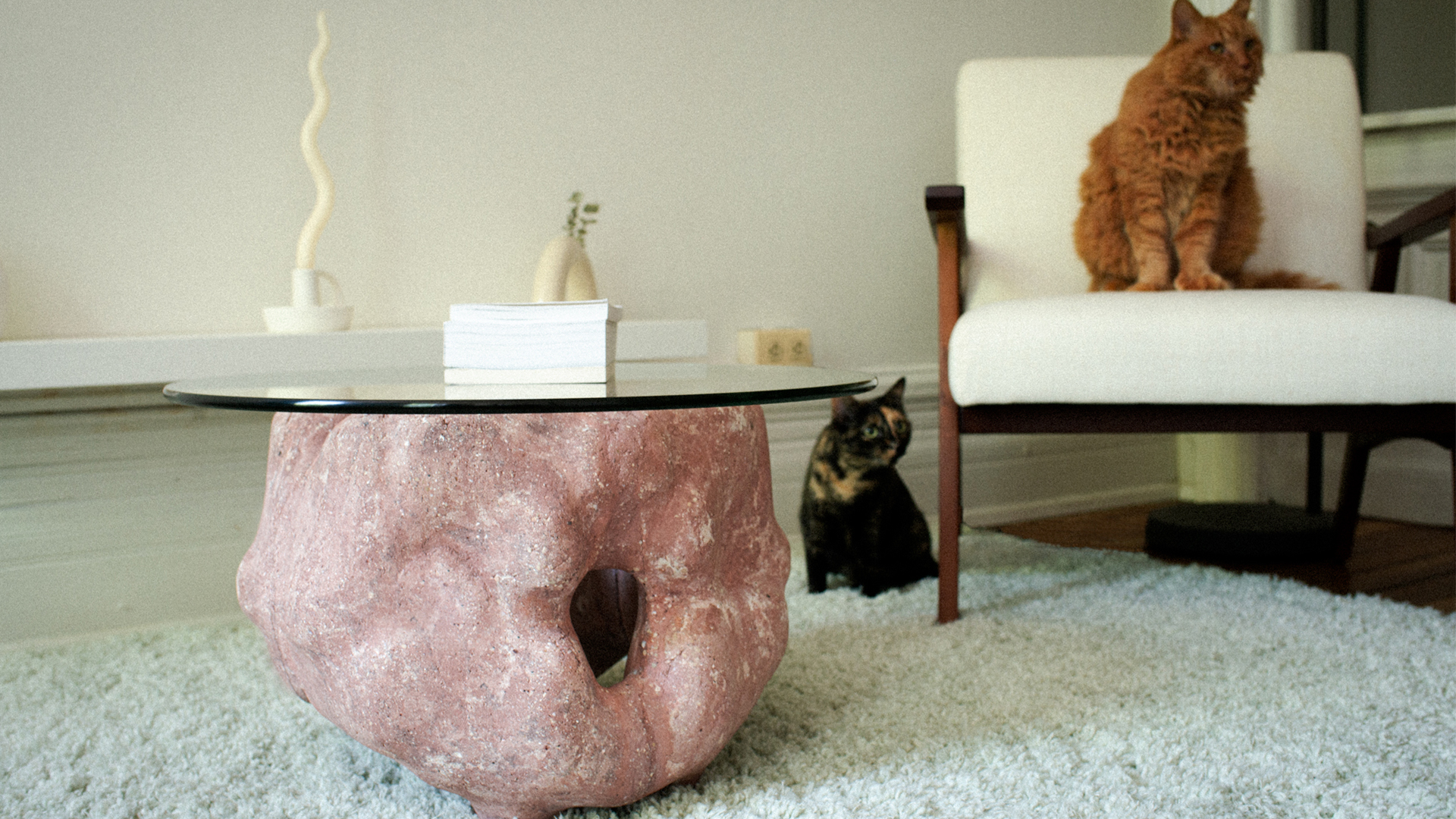
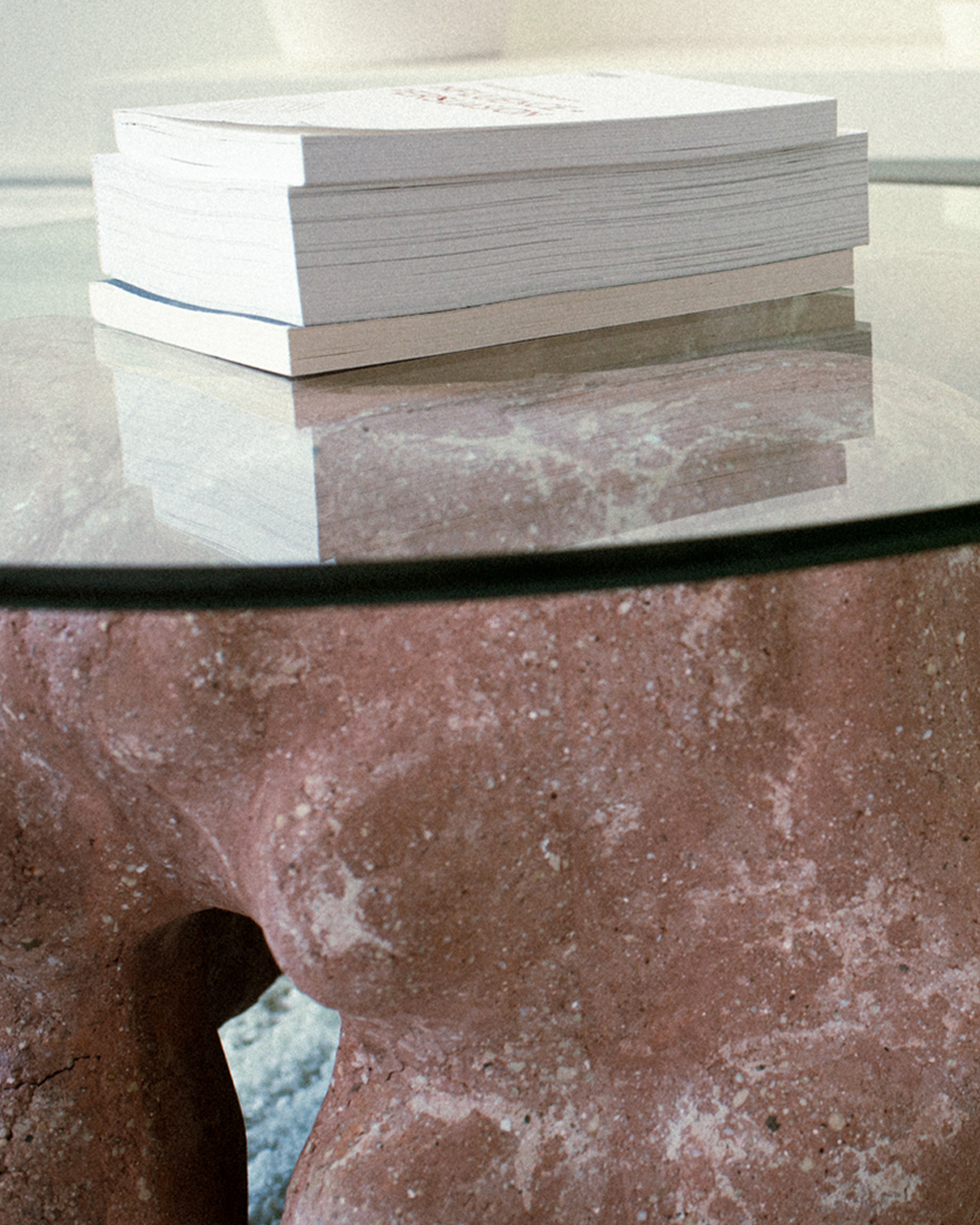
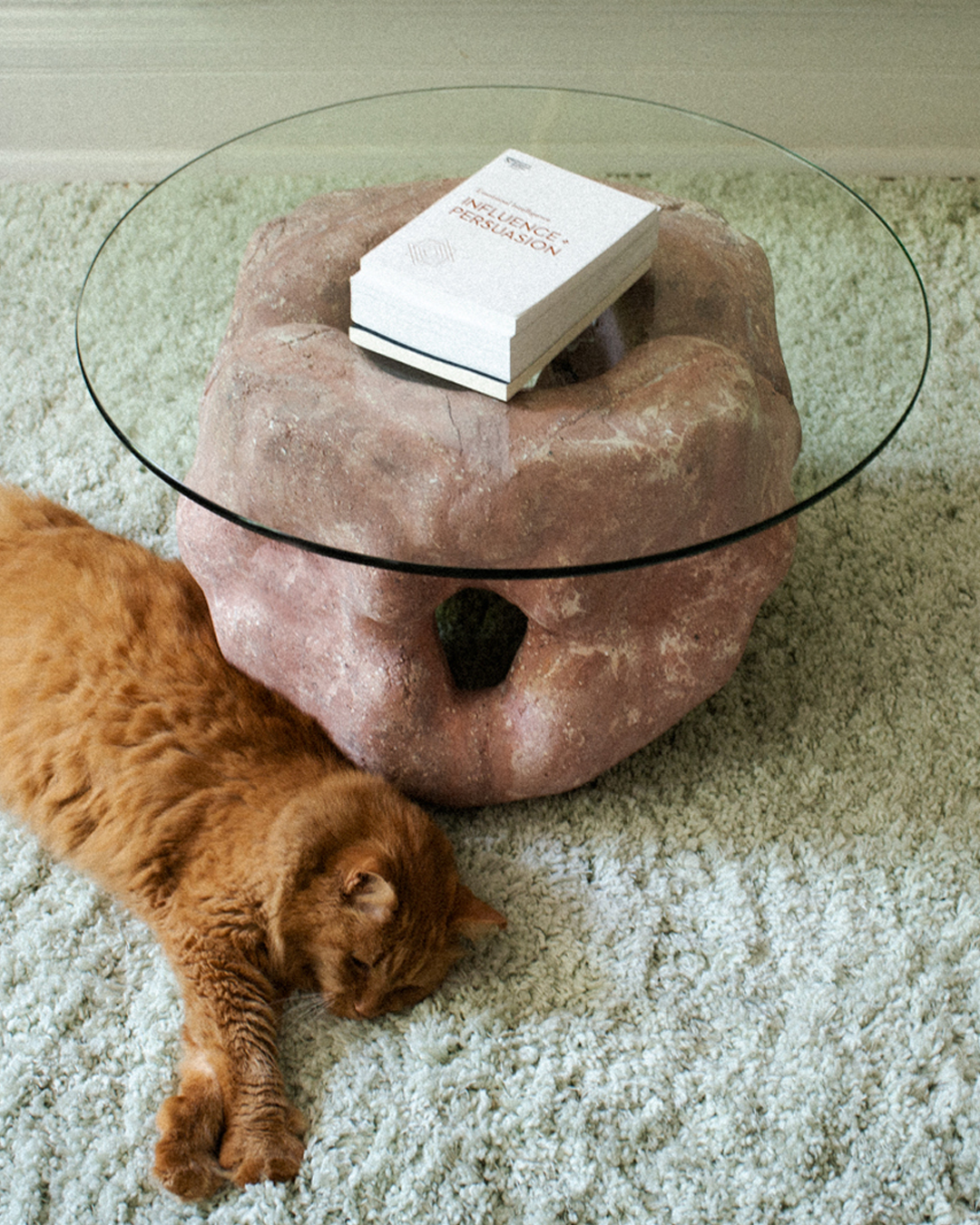

The clone is created via an iPhone app where images of the tree trunk are turned into a 3D model via the software. Having this clone provides a starting point to see nature on an intimate level while being able to non-destructively work with this material. Rather than a give-and-take relationship, technology in this instance offers infinite possibilities without creating unnecessary waste. The transition from digital to physical is enabled through 3D printing moulds in which a biocomposite material made from oyster shells is cast. Rather than a reliance on external manufacturing, “Scrambled & Assembled” demonstrates the practicality of fabricating within the home through biodegradable ingredients.
“Rather than a reliance on external manufacturing, ‘Scrambled & Assembled’ demonstrates the practicality of fabricating within the home through biodegradable ingredients.”
Fast forward to the present time. The birds sing a little quieter as the streets fill from morning traffic. The lawns are still growing, but the small critters and bumblebees no longer flutter as the sounds of leaf blowers consume the air. At this moment, where technology appears to push us towards a Jetsons-esque future, I ask myself: how do I want to live? In this controlled, artificial environment I reside in, what type of relationship should be established with technology? Can the very tools I rely on for my daily tasks offer an alternate relationship with the abundance of nature? “Scrambled & Assembled” creates precedence for a methodology of co-creation with nature enabled by technology. This process of encoding physical experiences into a digital format and translating bytes into an object reframes the context in which the cycle of growth, death, decay and rebirth can occur.
Nature in its abundance is always ready to offer its guidance—it’s simply waiting for us to slow down, look, and imagine a future with it rather than against it.
Nature in its abundance is always ready to offer its guidance—it’s simply waiting for us to slow down, look, and imagine a future with it rather than against it.
ABOUT THE AUTHOR
"Only One Yes" is a design research studio founded by Hong Kong-Canadian designer Boris Yu. Intrigued by the discourses about the natural and unnatural world, his fascination with the lived experience addresses the increasingly unrelatable and emotionally detached environment. The studio's body of work currently focuses on conceptual material research as a carrier for speculative futures, investigating alternate narratives at the intersection of craft, nature, and technology. Grounded on a methodology upholding the intimate aspects that make us human, these explorations suggest a way forward through collective care and imagination.
"Only One Yes" is a design research studio founded by Hong Kong-Canadian designer Boris Yu. Intrigued by the discourses about the natural and unnatural world, his fascination with the lived experience addresses the increasingly unrelatable and emotionally detached environment. The studio's body of work currently focuses on conceptual material research as a carrier for speculative futures, investigating alternate narratives at the intersection of craft, nature, and technology. Grounded on a methodology upholding the intimate aspects that make us human, these explorations suggest a way forward through collective care and imagination.








